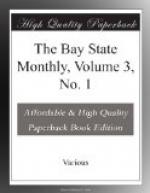Art. 4. Both governments will facilitate the construction of said canal and establish two free ports, one at each end of said canal.
Art 5. Both governments will guaranty and protect the neutrality of said canal; provided, however, that said protection and guaranty may be withdrawn by both, or either governments, if both or either should deem that the persons building or managing the same adopt or establish regulations concerning traffic therein, as are contrary to the spirit and intention of this convention, either by unfair discrimination, in favor of the commerce of one contracting party over the other, or by imposing oppressive exactions or unreasonable tolls upon passengers, vessels, goods, wares, merchandise, or other articles,—neither party to withdraw such protection and guaranty without first giving six months notice to the other.
Art 6. Treaty stipulations maybe made with the Central American States, and states with which either or both parties have friendly intercourse; and settle all differences arising as to the rights of property in the canal, etc.
Art. 7. Contract to be entered into without delay, and the party first commencing labor, etc., in the construction of said canal, is to have priority of claim to construct the same, and will be protected therein by the parties to this treaty.
Art. 8. Both governments agree that protection shall be extended by treaty stipulations, hereafter to be made and entered into, to other communications or ways across said isthmus.
Art. 9. Treaty to be ratified by both governments and ratifications exchanged at Washington within six months.”
This treaty bears date April 19, 1850, and is still in force in all its provisions.
Is there anything in the terms, conditions, or effect of this treaty, which in any way tends to militate or conflict with the declarations of the “Monroe Doctrine?”
To answer this question satisfactorily, and give a careful analysis of the treaty, in all its details, would take more time and space than I am at liberty to use; but I may be pardoned if I trespass a little and give a few reasons why I am come to the conclusion that the effect of the Clayton-Bulwer Treaty is to abrogate and annul to a great extent the cardinal principle of the “Monroe Doctrine.”
In the first place the “Monroe Doctrine” was the accepted policy of this government as to all foreign intervention from 1823 to 1850, and with some of the leading minds of the country it has never ceased to be the paramount creed in the national catechism. During these twenty-seven years the project of building an inter-oceanic canal had been considerably agitated, in Congress and out, and had enlisted to some extent the sympathies of foreign powers who desired a shorter passage to the Pacific Ocean, the East Indies, and the markets of Cathay, than the stormy ones around the southern capes of either hemisphere.




